When diagnosing gout, doctors, along with medications, recommend that patients first change their diet. The gout diet is an essential component of the complex treatment of the disease. Its use will speed recovery as much as possible, quickly relieve pain symptoms, reduce the severity of attacks, and prolong periods of remission.
Diet principles and benefits
The main objective of diet therapy is to organize a diet that helps to fight the pathology and prevent relapses. With gout, the diet aims to:
- regulation of purine metabolism;
- decrease in the amount of urates;
- normalization of the process of removing excess uric acid;
- regulation of metabolic processes;
- increased urine alkalinity;
- weight loss when overweight;
- general health of the patient.
A type of hypopurine nutrition is being formed based on therapeutic principles and rules of diet, including the prohibition of foods high in purine compounds, salts and oxalic acids. It is also necessary to reduce the amount of fatty compounds, carbohydrates and proteins consumed.
Therapeutic nutrition and diet for gout provides for an increase in the proportion of vegetables, fruits, natural drinks, kefir, cottage cheese in the diet. The most effective is a single 4-5 hour regimen of adequate nutrition with an average calorie content in the range of 2, 500 to 2, 800 units.
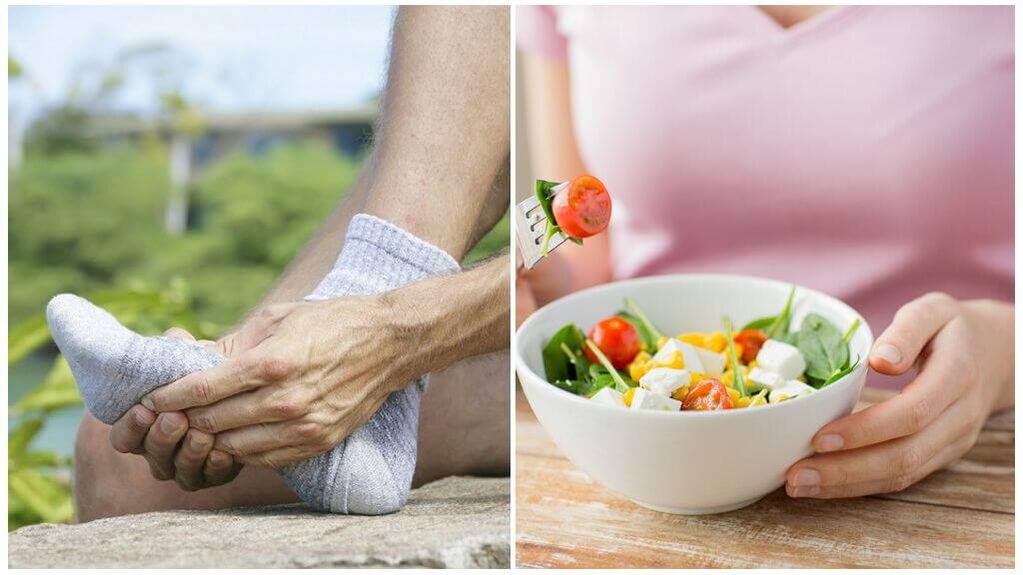
Important!
The intake regimen should ensure the flow of fluid to the body in an amount of 2. 5 liters or more.
How to organize meals
To maximize the effectiveness of the gout diet, you should follow several recommendations:
- the main way of cooking is boiling, baking, steaming;
- drain the meat broth after 10 minutes of boiling;
- meat, fish and alternative vegetarian dishes;
- use only natural liquids;
- spend fasting days;
- avoid fasting.
Important!
In the presence of chronic diseases, it is necessary to contact a specialist for the development of an individual nutrition system.
The main types of diets
The organization of proper therapeutic nutrition will not completely eliminate gout, but it will significantly alleviate the manifestation of the pathology and prevent its recurrence. The type of diet prescribed will largely depend on the general condition of the patient, his weight, the presence of additional diseases and even his sex.

The main type of medical nutrition for gout is a diet - table number 6. Also, patients with gout, especially those suffering from shortness of breath and being overweight, often use diet table number 8, alkaline diets, rice and buckwheat. Kefir, cottage cheese, fruit or vegetable diets are suitable for fasting days.
Diet table number 6
It is prescribed to patients with gout in the first place. It allows in a short time to normalize the exchange of purine compounds and eliminate the causes of crystallization and accumulation of uric acid salts.
Fulfilling the nutritional requirements reduces the activity of uric acid reactions in the body. As a result, the patient's well-being quickly improves, the growth of the inflammatory process stops, swelling subsides, the feeling of pain and stiffness in the joints disappears.
Diet for high uric acid content
It is based on the refusal or reduction in the menu of products with a high content of purines, refractory fats, salt.
It is proposed to replace them with products with an alkalizing effect: dairy products, sour milk, cottage cheese, fruits and vegetables. The diet provides for one fasting day per week.
Diet for Gout exacerbation
First of all, during an exacerbation, it is necessary to increase the amount of liquid you drink up to 3 liters. Then completely exclude dishes with meat and fish. The lack of animal protein can be supplied by increasing the proportion of dairy and dairy products in the diet.
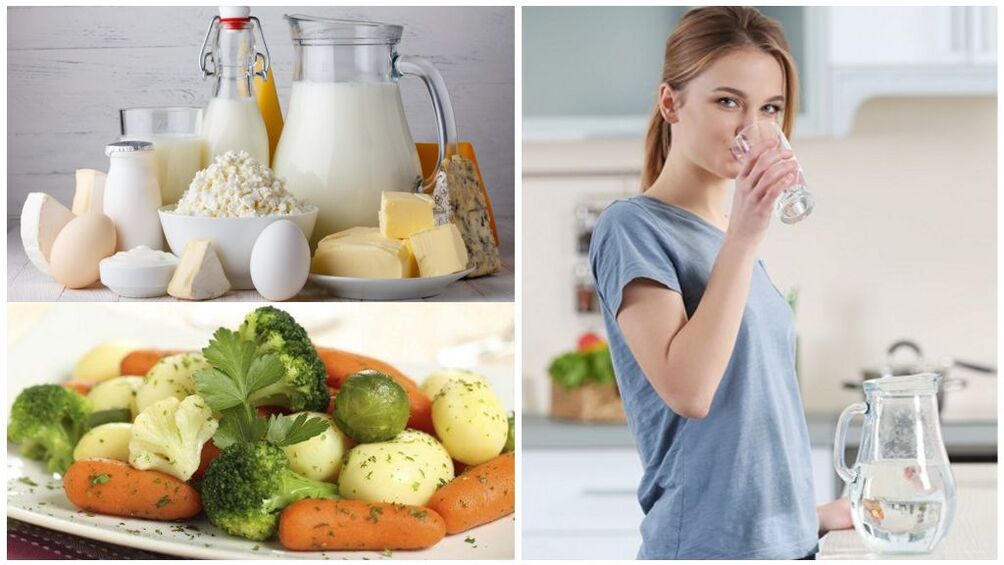
Before the end of the acute period of the disease, fasting days should be arranged on alternate days, eating one type of food (cottage cheese, kefir, boiled vegetables, fruits).
Important!
Fasting causes a sharp release of uric acid and is strictly prohibited in gout.
Diet table number 8
Table number 8 strictly regulates nutrition for gouty legs in severely overweight patients. This diet aims to increase metabolism and get rid of excess fat in the body.
The main difference from the general requirements of a therapeutic diet for gout in this case is a moderate reduction in caloric content and fluid intake, on average, up to 1. 5 liters per day.
On a note!
For men with gout, the diet provides for maintaining the calorie content of food at a level of not less than 2100-2500 units. With gout for women, diet number 8 limits the menu in the range of 1400 to 1700 kcal.
buckwheat diet
Buckwheat's low calorie content allows it to be used in therapeutic dietary nutrition. Its consumption restores disturbed metabolic processes, quickly gives a feeling of satiety and allows you to forget about the feeling of hunger for a long time. Buckwheat is the leader in the presence of vitamins and all kinds of trace elements.
Vegetable protein from cereals is better absorbed and is able to completely replace the animal. In the phase of restoration of bone and muscle tissues, the product assists in the regeneration processes. Buckwheat porridge in combination with kefir is ideal for gout fasting days.
On a note!
Buckwheat is most often prepared with dietary foods without salt. The buckwheat diet allows you to quickly reduce weight, which has a positive effect on joints prone to the destructive effects of gout.
rice diet
The rice-based diet is most often used to cleanse the body and as a way to lose weight. Rice with gout accelerates metabolism, removes excess water and salt, relieves swelling well. Manganese, selenium, phosphorus, iron, zinc, which are part of rice, have a beneficial effect on all of the body's life support systems.
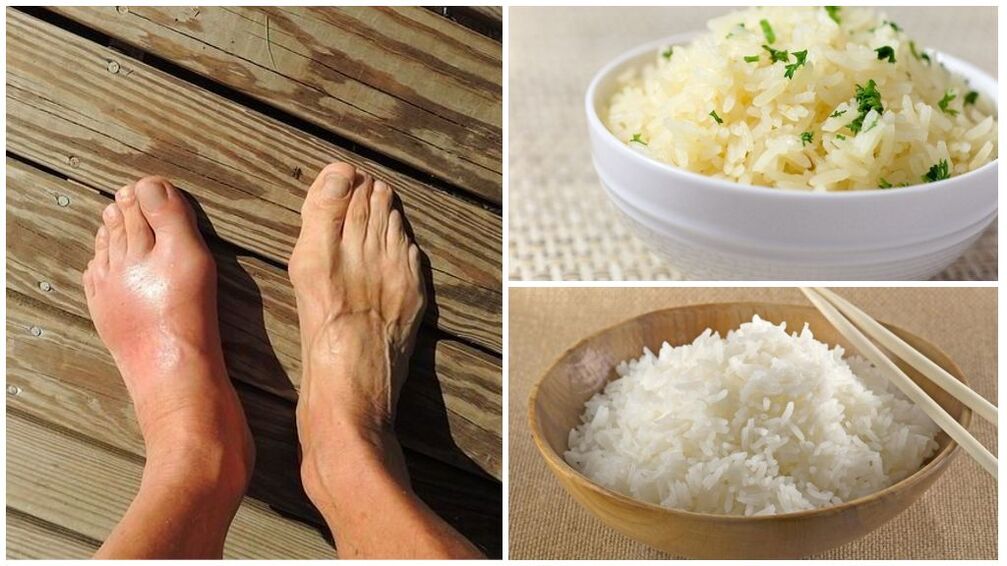
The porous structure of cereal extracts toxins, salts and harmful slag accumulated from diseased joints. The rice diet can also be used for fasting days, especially during a gout flare.
Important!
For the diet, only brown or white long-grain steamed rice is used. By treating gout with nutrition, these cereals can be used daily.
alkaline diet
Increased acidity in the body negatively affects metabolic processes. This is accompanied by a lack of calcium and the destruction of bone tissue. Using an alkaline diet will help prevent health-threatening processes. The basis of the diet are fruits, sour milk and dairy products. This diet can be used during the period of gout exacerbation and in the remission stage.
Prohibited and allowed products
To properly rebuild the nutritional system, you need to know which foods will benefit and help fight gout and which will have a harmful effect and cause an exacerbation of the disease.
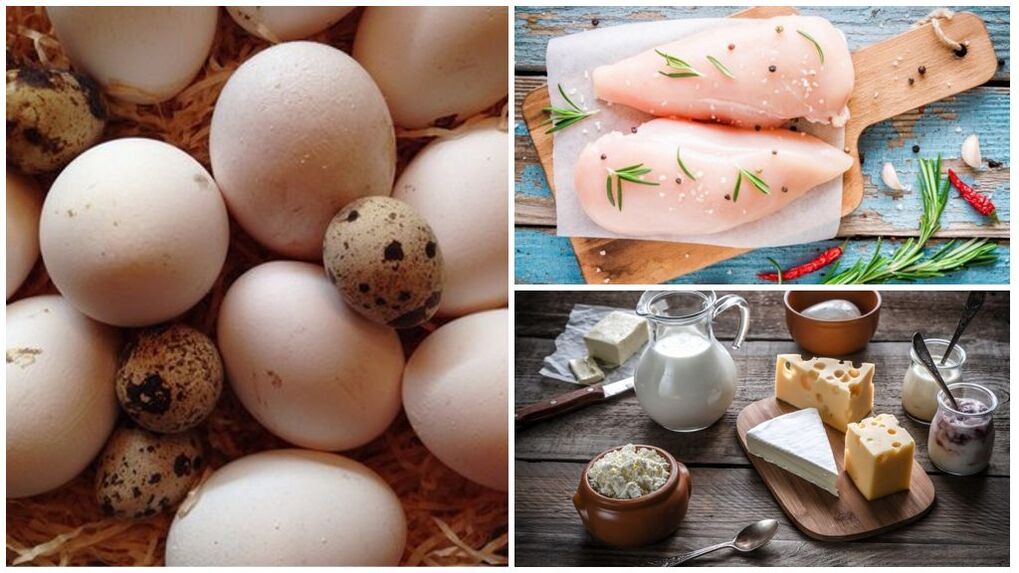
All food products can be listed in the table of staple foods of the diet for gout, depending on the quantitative content of purines, salt, fat and other harmful substances. The main divisive sign of the product list for gout is the content of purine compounds.
| Rich in Purines | low purine |
|---|---|
|
|
Important!
It is strictly forbidden for gout to drink drinks that contain any amount of alcohol.
What products are useful
By determining the level of purines and unhealthy fats in foods, you can find out exactly which foods can be eaten with gout without harming your health and which ones should be limited.
On a note!
Fruits in the group of especially helpful products for gout include pears, bananas, and apples. Malic acid, which is part of the fruit, is able to neutralize the action of uric acid.

Potassium destroys uric acid crystals, which contributes to their accelerated removal from the body. Ascorbic acid heals, restores and strengthens the connective tissues of the joints. Especially useful is fruit nutrition in the composition of fermented dairy products.
Great benefits for gout will bring regular use of fresh cherries and cherry jam. Berries contain antioxidants that act against free radicals. Bioflavonoids and anthocyanins prevent the inflammatory process in gout.
Useful substances contained in strawberries and strawberries neutralize uric acid and prevent its crystals from forming in the joints.
On a note!
You can include these berries and fruits in your diet for gout in unlimited amounts.
What foods cannot be eaten
In addition to the products indicated in the summary table, strong broths of meat, fish and mushrooms should be excluded from the diet. They are contraindicated due to the high content of purines, which can cause a sharp exacerbation of gout. Undesirable and fish, canned meat, containing a large percentage of salt. Its use with a purine diet disrupts the water-salt balance and contributes to additional deposition of salts in joint tissues.

The list of prohibited foods for gout also includes tea, coffee and cocoa. These drinks should not be consumed with gout, as they retain uric acid in the body, interfering with the process of its withdrawal. This leads to a relapse of the disease.
Daily menu of the week
An extensive list of products allowed for consumption allows for an individual approach to the choice of dishes and the appropriate diet for any patient with gout. The recommended diet for the week is balanced, complete and composed of foods that are useful for gout.
| breakfast 1 | Herb Omelet, Rosehip Broth, Carrot Salad |
| breakfast 2 | banana, kefir |
| Dinner | Vegetable soup with vermicelli, boiled potatoes, rabbit in onion sauce, apple juice |
| afternoon tea | Apple, cheesecake, lemon tea |
| Dinner | zucchini caviar, kissel |
| breakfast 1 | Rice porridge, pear broth, tomato salad |
| breakfast 2 | Fruit salad, kissel |
| Dinner | Onion soup, barley porridge with forest mushrooms, dried fruit compote |
| afternoon tea | Pear, pumpkin dumplings |
| Dinner | Curd soufflé, linden tea |
| breakfast 1 | Wheat porridge, apricot juice |
| breakfast 2 | Yogurt with cherries, rosehip broth |
| Dinner | Soup with fish meatballs, vegetable stew, apple jam |
| afternoon tea | Cheesecakes with sour cream, jam |
| Dinner | Pilaf with plums, kefir |
| breakfast 1 | Rice Casserole, Milkshake, Apple Coleslaw |
| breakfast 2 | Strawberries with cream, green tea |
| Dinner | Beetroot with sour cream, buckwheat, turkey breast with prunes, mint tea |
| afternoon tea | Pancakes with strawberries, carrot juice |
| Dinner | Cheese casserole with herbs, pear compote |

| breakfast 1 | Oatmeal with raisins, tomato juice, fruit salad |
| breakfast 2 | Cucumber salad with olive oil, orange juice |
| Dinner | Buckwheat Soup, Roasted Zucchini with Rice, Orange Juice |
| afternoon tea | Banana, oat jelly |
| Dinner | Steamed fish with vegetables, kefir |
| breakfast 1 | Corn milk porridge, plum juice |
| breakfast 2 | Salad with young carrots and garlic, plus an apple |
| Dinner | Egg soup, cabbage rolls with vegetables and turkey meat, apple juice |
| afternoon tea | Cottage cheese with banana, strawberry tea |
| Dinner | Rice pudding, tomato juice |
| 1st breakfast | Poached egg, green tea |
| 2nd breakfast | Pear, green tea with marshmallow |
| Dinner | Borscht without meat, macaroni and cheese, fruit compote |
| afternoon tea | Baked apples with curd, lemon drink |
| Dinner | Vinaigrette, linden decoction |
Allowed vegetables and fruits can be consumed in unlimited quantities as a supplement to the main menu. It is better not to use wheat bread for gout patients, including the big toe.
Important!
Foods with added natural honey for gout can cause an allergic reaction.
diet recipes
The sample menu proposed for the week includes many diet dishes, adapted to what you need to eat. If desired, they can be substituted for others using a table list of foods allowed for gout and recommendations on what you can and cannot eat with gout.
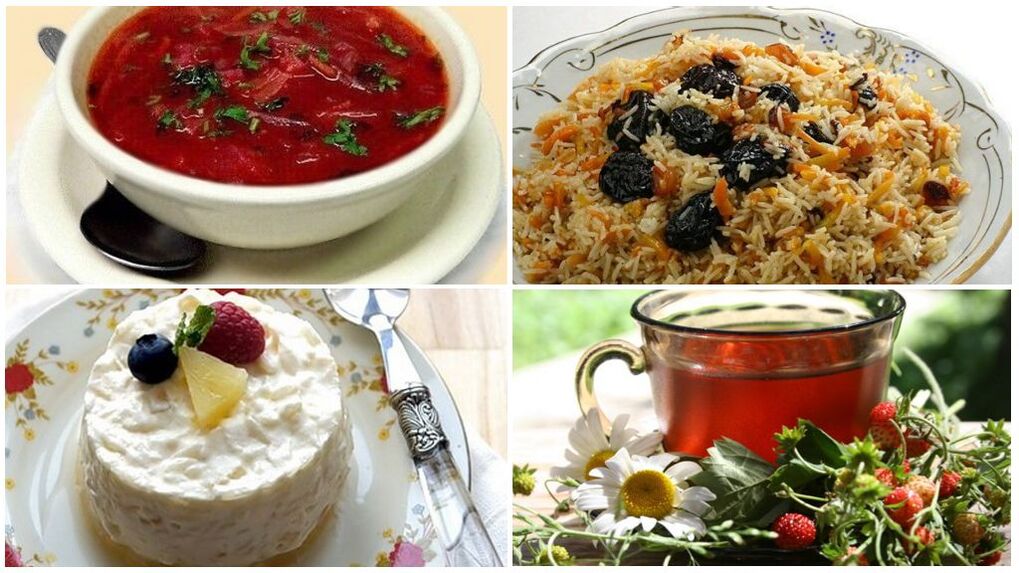
borsch without meat
Peel 1 beet, carrot, onion. Sauté the diced onion and the grated root vegetables in olive oil on a coarse grater with the addition of a tomato or 1 tbsp. I. tomato. 4 potatoes cut into cubes, boil in 1. 5 liters of water. for 10 min. until cooked, add the fresh cabbage shredded into strips. for 5 min. - vegetable stew. Season with salt to taste. When serving, add parsley, dill and a spoonful of sour cream.
Pilaf with plums
Wash a cup of rice. In a cauldron with vegetable oil, add 2 onions cut into strips and 2 carrots in cubes. Saute everything a little. Add 10 pieces of washed and chopped prunes. We pass everything until the vegetables are soft. Pour the rice, mix so that it is completely saturated with oil, pour 2 cups of boiling water. Add spices and salt to a minimum. After boiling, reduce the heat and simmer for 20 minutes under a tightly closed lid.
sweet rice
Boil half a cup of rice in 1 liter. water for 10 minutes. Drain the water, wash the rice. Pour with a glass of milk and cook for another 25 minutes. until you get a soft porridge. Beat 2 eggs and steam 50 g of raisins. Mix everything with the cooled porridge, add salt on the tip of a knife and 1 tsp. Sahara. Bake in a medium oven in a greased and floured shape until golden. Serve with cherry syrup.
strawberry tea
A pinch of dried leaves with strawberries pour a glass of boiling water, soak for 3 minutes. Drink without sugar.
With these recipes for every day, you can improve your well-being and reduce the manifestations of pathology.
Conclusion
Proper nutrition for gout should become the daily norm in the patient's life. This will slow down or even completely stop the development of the pathology. As a result, it will be possible to protect other organs from damage.
Important!
It must be remembered that the diet is a supplement, not a substitute for drug therapy. The rheumatologist's recommendations should be followed at all stages of treatment.
















































































